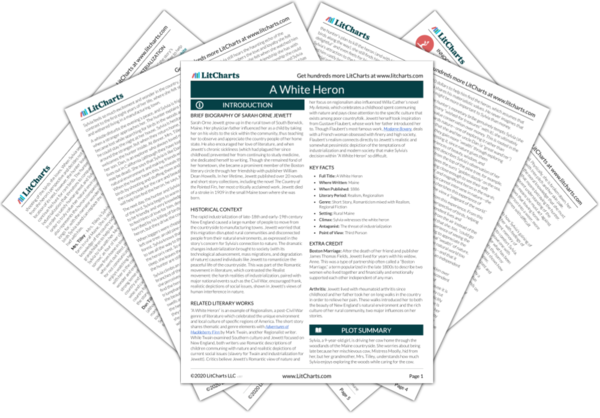Welcome to the LitCharts study guide on Sarah Orne Jewett's A White Heron. Created by the original team behind SparkNotes, LitCharts are the world's best literature guides.
A White Heron: Introduction
A White Heron: Plot Summary
A White Heron: Detailed Summary & Analysis
A White Heron: Themes
A White Heron: Quotes
A White Heron: Characters
A White Heron: Symbols
A White Heron: Literary Devices
A White Heron: Theme Wheel
Brief Biography of Sarah Orne Jewett

Historical Context of A White Heron
Other Books Related to A White Heron
Key Facts about A White Heron
- Full Title: A White Heron
- Where Written: Maine
- When Published: 1886
- Literary Period: Realism, Regionalism
- Genre: Short Story, Romanticism mixed with Realism, Regional Fiction
- Setting: Rural Maine
- Climax: Sylvia witnesses the white heron
- Antagonist: The threat of industrialization
- Point of View: Third Person
Extra Credit for A White Heron
Boston Marriage: After the death of her friend and publisher James Thomas Fields, Jewett lived for years with his widow, Anne. This was a type of partnership often called a “Boston Marriage,” a term popularized in the late 1800s to describe two women who lived together and financially and emotionally supported each other independent of any man.
Arthritis: Jewett lived with rheumatoid arthritis since childhood and her father took her on long walks in the country in order to relieve her pain. These walks introduced her to both the beauty of New England’s natural environment and the rich culture of her rural community, two major influences on her stories.







